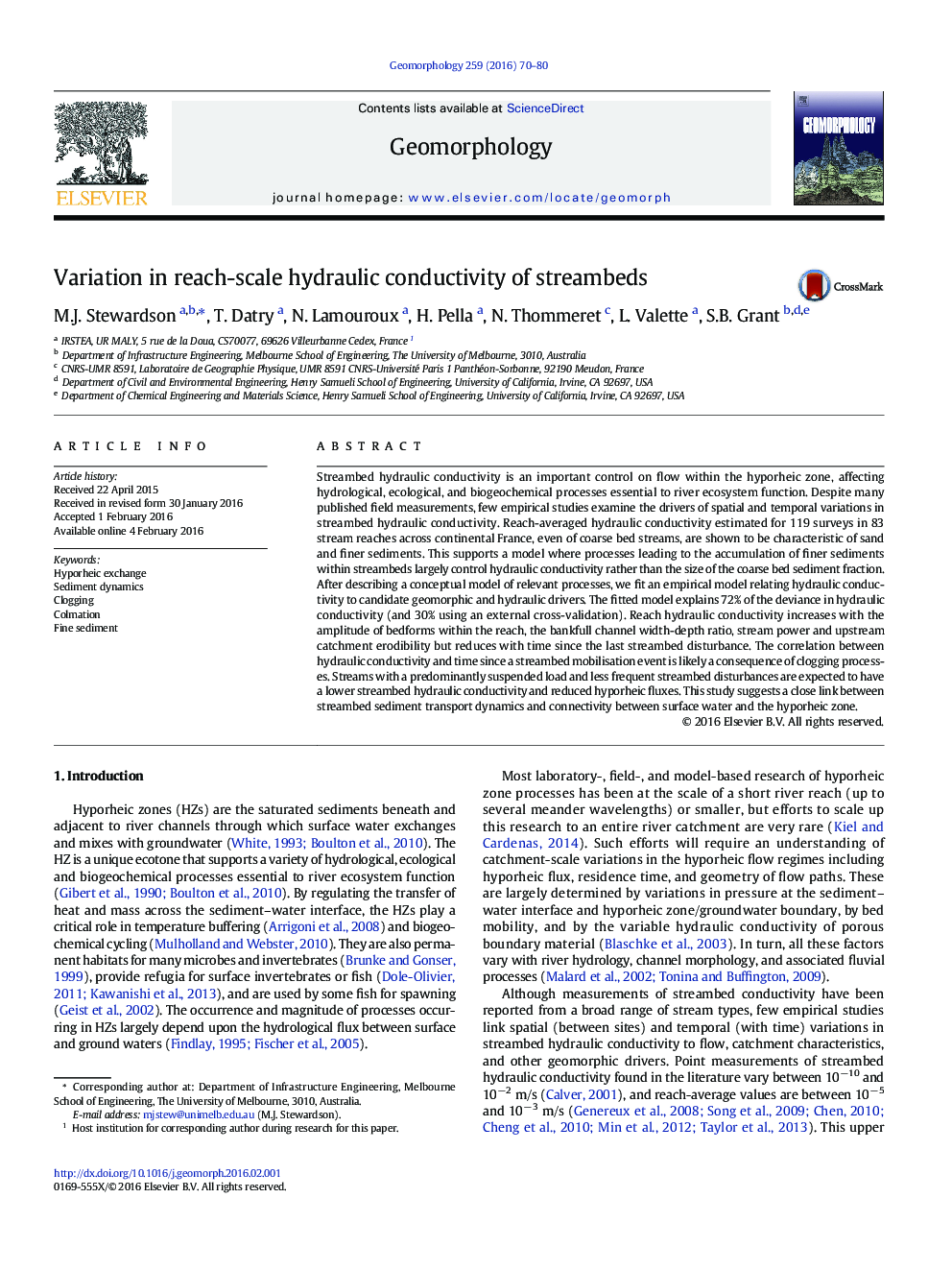| کد مقاله | کد نشریه | سال انتشار | مقاله انگلیسی | نسخه تمام متن |
|---|---|---|---|---|
| 6431619 | 1635390 | 2016 | 11 صفحه PDF | دانلود رایگان |
- We compared hydraulic conductivity of streambed sediments in 119 surveys across 83 mostly coarse-bed stream reaches in France.
- Hydraulic conductivity, even of coarse bed streams, was characteristic of sand and finer sediments.
- Hydraulic conductivity increased with bedform amplitude, channel width-depth ratio, catchment erodibility and stream power
- Hydraulic conductivity decreased with time since the last bed disturbance.
- Streams with a predominantly suspended load and less frequent streambed disturbances had lower hydraulic conductivity.
Streambed hydraulic conductivity is an important control on flow within the hyporheic zone, affecting hydrological, ecological, and biogeochemical processes essential to river ecosystem function. Despite many published field measurements, few empirical studies examine the drivers of spatial and temporal variations in streambed hydraulic conductivity. Reach-averaged hydraulic conductivity estimated for 119 surveys in 83 stream reaches across continental France, even of coarse bed streams, are shown to be characteristic of sand and finer sediments. This supports a model where processes leading to the accumulation of finer sediments within streambeds largely control hydraulic conductivity rather than the size of the coarse bed sediment fraction. After describing a conceptual model of relevant processes, we fit an empirical model relating hydraulic conductivity to candidate geomorphic and hydraulic drivers. The fitted model explains 72% of the deviance in hydraulic conductivity (and 30% using an external cross-validation). Reach hydraulic conductivity increases with the amplitude of bedforms within the reach, the bankfull channel width-depth ratio, stream power and upstream catchment erodibility but reduces with time since the last streambed disturbance. The correlation between hydraulic conductivity and time since a streambed mobilisation event is likely a consequence of clogging processes. Streams with a predominantly suspended load and less frequent streambed disturbances are expected to have a lower streambed hydraulic conductivity and reduced hyporheic fluxes. This study suggests a close link between streambed sediment transport dynamics and connectivity between surface water and the hyporheic zone.
Journal: Geomorphology - Volume 259, 15 April 2016, Pages 70-80
